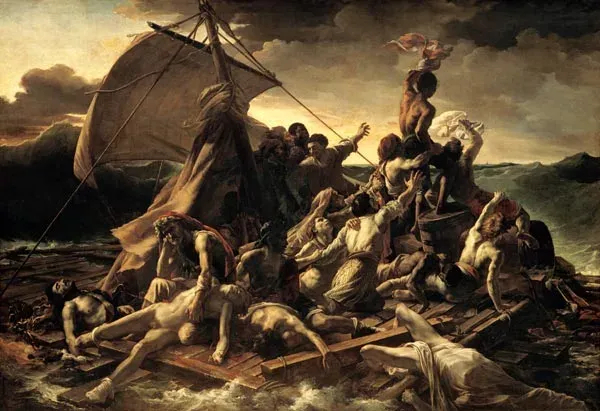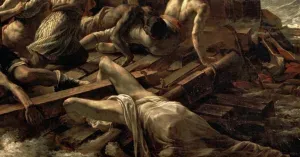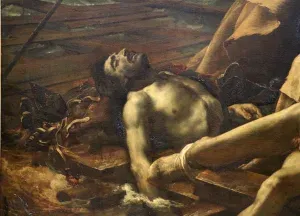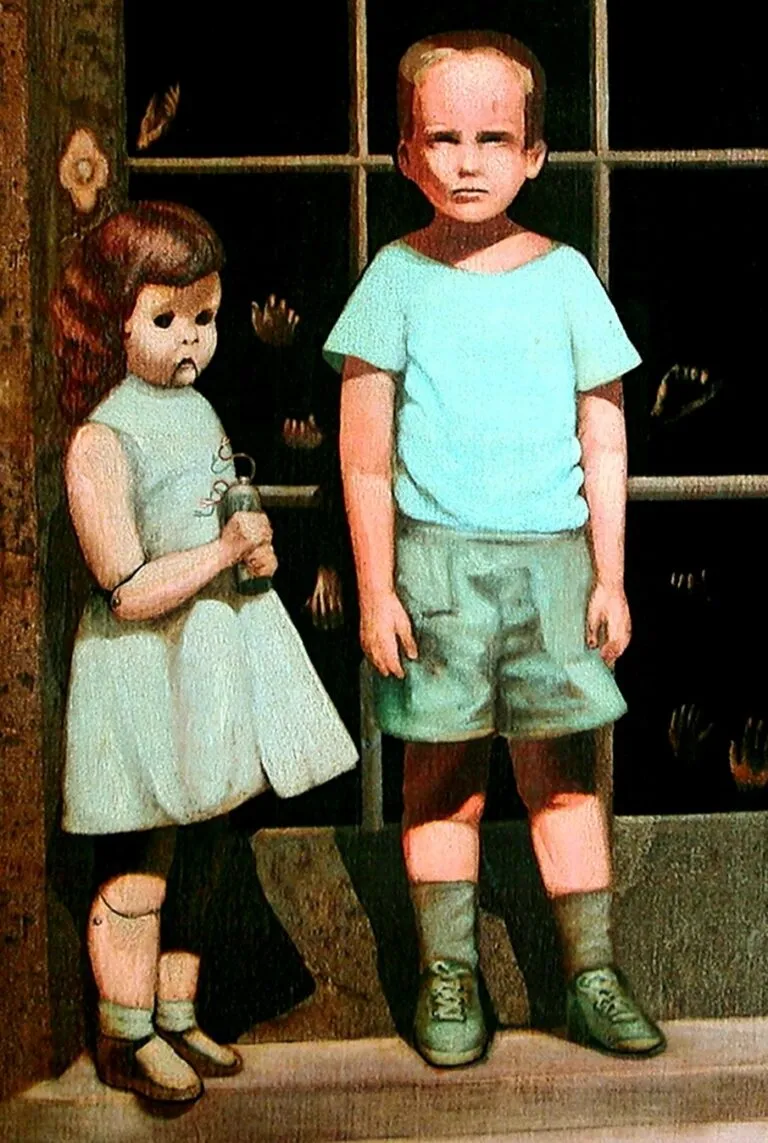The Raft of the Medusa

The Raft of the Medusa by Théodore Géricault: A Masterpiece of Realism and Human Tragedy
This monumental painting, completed in 1819, depicts one of the most significant and controversial moments of the 19th century, both in art and in French political and social history.
The Historical Context
The story that inspired Géricault is that of the wreck of the French frigate Medusa in 1816 off the coast of Senegal. Following the incident, 150 people were abandoned on an improvised raft, only 15 of whom survived the terrible journey of hunger, dehydration, and cannibalism. The tragedy was amplified by the negligence and corruption of the French military leadership of the time, which led to the shipwreck and the abandonment of the survivors.
The Painting
Géricault captures the drama of this story with unmatched skill. The painting, of monumental dimensions (at least 491 x 716 cm), shows a group of desperate and dying men crowded on a drifting raft. The bodies are contorted by pain and despair, with some pleading for help while others fall into the inexorable abyss of death. The stormy sky and the choppy waves add a further sense of anguish and imminent danger.
 The Impact
The Impact
What makes “The Raft of the Medusa” so powerful is its ability to evoke a wide range of emotions in the audience. Géricault avoids any patriotic triumphalism or glorifying rhetoric, instead showing the brutal reality of human suffering. The painting is a silent cry against injustice and indifference, a stark testimony to the consequences of greed and mismanagement of power.
 Legacy
Legacy
The legacy of “The Raft of the Medusa” is profound and enduring. Géricault demonstrated the power of art to give voice to the voiceless, to challenge social injustices, and to draw attention to forgotten human tragedies. The painting has inspired generations of subsequent artists, influencing movements such as realism and romanticism, and remains an indelible testament to the ability of art to transform pain into beauty and meaning.
In conclusion, remains one of the most powerful and provocative masterpieces in the history of Western art. Through its poignant depiction of human suffering and despair, the painting invites us to reflect on the tragedies of the past and to strive for a more just and compassionate future.


 The Impact
The Impact Legacy
Legacy




